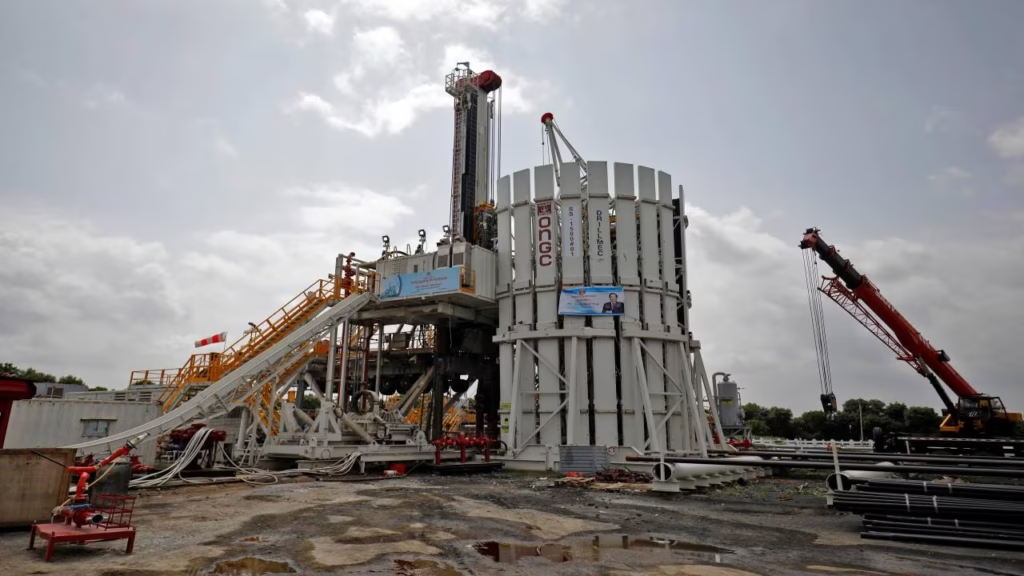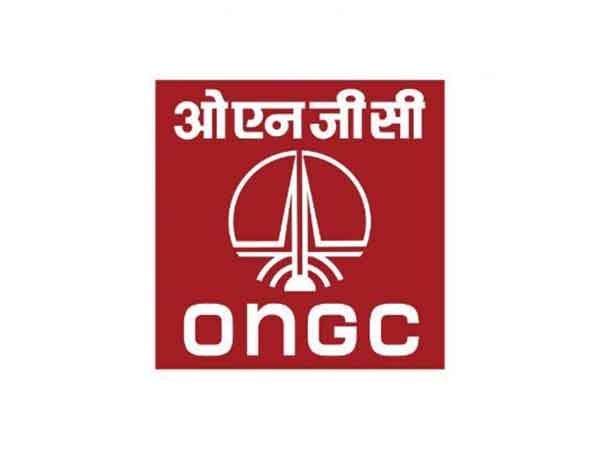The Assam gas well leak in Sivasagar has turned into a serious industrial emergency, forcing ONGC (Oil and Natural Gas Corporation) to seek international assistance. The incident occurred at an ONGC-operated gas well near Rudrasagar in Assam’s Sivasagar district. In response to the worsening situation, ONGC has decided to bring in a US-based expert to contain the leakage and prevent a possible blowout. The leak has triggered safety concerns among locals, and the state government has stepped in to offer compensation and relief
What Happened at the Assam Gas Well?
According to ONGC officials, the Assam gas well leak began during drilling operations at a depth of around 900 meters. An unexpected pressure surge led to the uncontrolled release of natural gas. While no casualties have been reported yet, the gas well leak has caused panic in the surrounding villages due to the strong smell of gas and the visible gas cloud. ONGC technicians attempted to seal the well using conventional techniques but failed to bring the situation under control.
US Expert Flown In for Leak Containment
Recognizing the gravity of the Assam gas well leak, ONGC is flying in a global well control expert from the United States. This expert will lead a specialized team to design and execute advanced containment operations. Similar to the 2020 Baghjan blowout in Assam, the current leak has raised serious questions about ONGC’s safety protocols. The presence of a US expert is intended to speed up the sealing process and minimize environmental damage caused by the gas well leak.

CM Himanta Biswa Sarma Responds Swiftly
Assam Chief Minister Himanta Biswa Sarma has taken immediate cognizance of the gas well leak and assured affected residents that the state government is committed to their safety. During a press briefing, the CM announced interim compensation for families living near the gas well. Medical camps have been set up, and evacuation plans are being reviewed in case the gas well leak worsens.
Local Residents in Fear, Demand Accountability
Villagers living near the site of the Assam gas well leak have expressed fear and frustration. Many have reported breathing difficulties and nausea due to the constant gas release. Community leaders have demanded a full environmental audit of ONGC operations in the region. The gas well leak has revived memories of earlier industrial disasters in the state and ignited debates around corporate accountability and local safety.
ONGC’s Safety Track Record Under Scrutiny
This Assam gas well leak comes as another blow to ONGC’s reputation in the region. The company has faced multiple leakages and operational lapses in Assam over the last decade. Critics argue that insufficient safety audits and poor infrastructure maintenance are to blame for the recurring issues. With the current gas well leak, ONGC now faces pressure to not only resolve the situation but also overhaul its safety framework.
Environmental Concerns on the Rise
Environmentalists have voiced alarm over the long-term impact of the gas well leak on local ecology. Sivasagar is known for its biodiversity, including nearby wetlands and farmland. Continuous gas emissions could potentially pollute groundwater, soil, and air in the region. The Assam Pollution Control Board has taken samples and is expected to release a preliminary report soon on the fallout of the Assam gas well leak.
Relief Measures and Monitoring Underway
As the Assam gas well leak continues, both ONGC and the Assam government have set up joint monitoring stations. Drones are being used to assess the leakage site, while thermal imaging cameras are tracking gas spread. Authorities have distributed masks and instructed residents to remain indoors, especially during night hours. Relief centers have been established in three nearby schools to accommodate temporary evacuations if the gas well leak escalates.

Lessons from Past Disasters: Is History Repeating?
The Assam gas well leak bears stark resemblance to the 2020 Baghjan incident, which led to massive ecological damage and displacement. Lessons from that tragedy seem to have been ignored, according to experts. The Baghjan blowout took 170 days to control, and the cost to local communities was severe. Now, with the current gas well leak, citizens and activists are demanding a detailed investigation and preemptive action plans for future industrial emergencies.
Call for Transparent Investigation
There are growing calls for a transparent inquiry into the Assam gas well leak, with opposition parties and NGOs demanding that ONGC be held accountable. Legal experts suggest that the incident may qualify for environmental compensation under the National Green Tribunal (NGT) laws. If proven that the gas well leak was caused by negligence, ONGC could face hefty penalties and be forced to pay long-term restitution to affected communities.

A Crisis Demanding Urgent Action
The Assam gas well leak is a stark reminder of the challenges posed by energy extraction in ecologically sensitive zones. While ONGC’s decision to bring in a US expert shows urgency, the incident has once again exposed loopholes in disaster preparedness and public safety. For the residents of Sivasagar and all of Assam, the coming days are critical as the state watches how effectively the gas well leak is contained.
ALSO READ: Israel Iran War: Missile Strikes Kill Civilians in Tel Aviv & Tehran Amid G7 Summit Escalation












